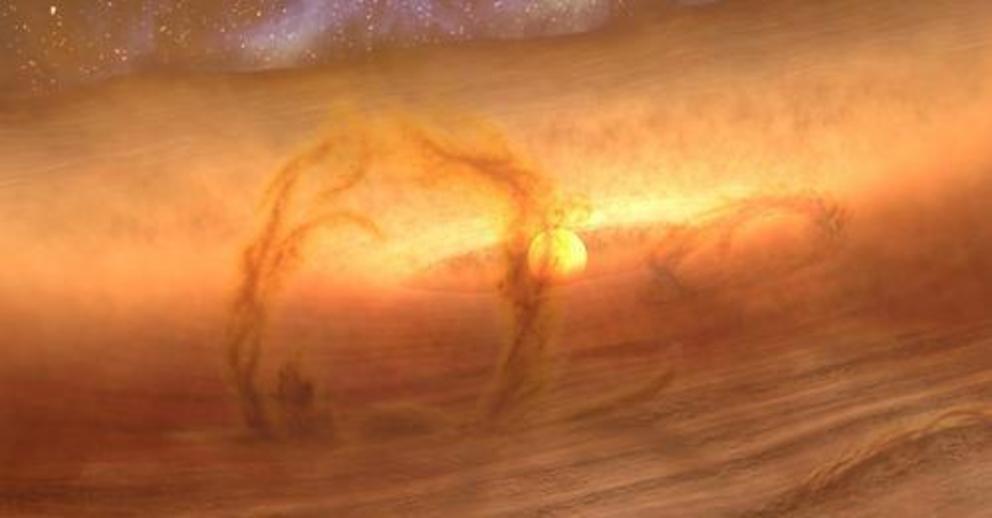Scientists spot the birth of a planet in deep space
Scientists have developed a new method to detect elusive newborn planets in faraway solar systems.
Protoplanetary disks, which surround young, newborn stars, are said to be where planets are born. Observations of planetary birth and formation within these environments have proven challenging, despite hundreds of these disks being observed throughout the universe.
In a new study, Harvard University and the Smithsonian Institution have developed a new method to detect these elusive newborn planets – and with it, the first evidence that a small planet like Neptune or Saturn may lurk in a cosmic disk.
The study’s lead researcher, Feng Long, says it is difficult to detect young planets directly and has only succeeded in a few cases. “The planets are always too faint for us to see because they’re embedded in thick layers of gas and dust.”
In order to discover whether there is a planet developing beneath the dust, scientists must seek clues instead.
There have been many structures that have appeared on disks in the past few years that we believe are caused by planets, but it may also be caused by something else”, Long says. “We need new techniques to look at and support that a planet is there.”
As a part of the research, Long re-examined a protoplanetary disk called LkCa 15. The disk is located 518 light years away in the Taurus constellation. Observations with the ALMA Observatory previously indicated that planets were forming in the disk.
LkCa 15 data obtained in 2019 were analyzed by Long, and two faint features were detected which had previously been missed. A dusty ring with two bright and separate groups of material orbiting within it was discovered by Long at about 42 astronomical units away from the star. It was shaped like a small clump separated by 120 degrees by a larger arc.
To figure out what was causing the buildup of material, Long studied computer models and found that their sizes and locations matched a planet’s presence model. There are about 120 degrees between this arc and this clump, she says. “That degree of separation doesn’t just happen — it’s very significant mathematically.”
A Lagrange point, or long point, is a point in space where two bodies, such as a star and an orbiting planet, will create enhanced areas of attraction which will allow the matter to accumulate. The material, Long explains, doesn’t just float around freely, it’s stable and prefers to be located based on physics and the objects involved.
Long detected this arc and clump of material at Lagrange points L4 and L5. An accumulation of dust can be seen at points L4 and L5 due to the presence of a small planet hidden 60 degrees between them.
In the results, the planet was found to be about the size of Neptune or Saturn, and the age was estimated to be between one and three million years old. When it comes to planets, that’s relatively young. While Long believes further observations of LkCa 15 may provide additional evidence supporting her planet discovery, direct imaging may not be possible anytime soon due to technology constraints.
The new approach she developed will also be used by astronomers in the future to detect planets, where material accumulates at Lagrange points in a preferential manner. “I do hope this method can be widely adopted in the future,” she says. “The only caveat is that this requires very deep data as the signal is weak.”
An article describing the results appears in The Astrophysical Journal Letters.

